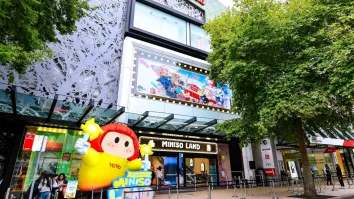Shedding new light on excess inventory
By Mitch BittermannMany retailers, especially fashion retailers, are stuck with excess amounts of inventory meant for their stores over the pandemic. However, with the high seasonality of fashion products, retailers are now being faced with ageing inventory and cash tied up in stock that is becoming obsolete.
At the beginning of the pandemic, retailers were worried about supply issues while experiencing an unprecedented boom in their e-commerce activity. However, as we start to emerge from the pandemic towards some semblance of normality, we are more likely to see a demand crisis in the fashion sector.
Online sales generally form a small percentage of retail in Southeast Asia. To illustrate, Singapore had an e-commerce penetration rate of 9% in 2020 even as the most mature market in the region. Even if e-commerce were to quickly rise to 30% of a retailer’s total sales, it is not able to absorb all the stock sitting in stores.
To minimise the damage to the balance sheet, there is a significant opportunity for retailers to tap into the rapidly growing off-price segment and build new revenue streams.
Off-price retail is the selling of branded items at significantly lower prices than full-price stores. While brands may have never wanted to be distributed through these channels, it will enable them to move stock and leverage a product lifecycle that spans beyond just a season. If done well, doing so can also protect the brand and build greater customer loyalty.
Leveraging product lifecycles
Off-price channels should become a key part of e-commerce strategies as it provides a platform to sell to many consumers.
Many brands have a clear idea of their commercial operating model, which usually entails getting in a new product, seeing it gradually mature over time with a merchandising and discounting approach. There will always be leftover inventory, which can be a major opportunity if played tactically with off-price channels.
If brands plan ahead, they can have their products on the right off-price channels to keep the products moving. This will ensure their products have a life after the season ends.
Protecting your brand through off-price
Traditionally, the off-price segment is focused on bargains and deals for consumers, with merchandising focused on creating a deal package rather than a curated assortment.
Often, brands do not want to be associated with bargain hunting platforms; but there are now new platforms with strategic partners or shopping clubs for a more upscale segment.
Strategic partners of choice are now available to brands to ensure that their brand appearance, visuals, and merchandising of stock are still of high quality.
Outnet.com, a sister site to Net-a-porter.com, is a perfect example of this. They stock high-end brands at up to 75% discount and do so through high-quality imagery and content marketing, which does not diminish the brands associated with the platform.
Additionally, retailers can build their own shopping club process, which shields discounted products from being visible to everyone online to protect the image of the brands as high quality.
OnTheList.com in Hong Kong and Singapore is one example. The platform holds weekly flash sales exclusive to members, for over 250 brands with surplus inventory left over from seasonal sales. At each flash sale, OnTheList offers an average 75% off retail price, and they work directly with the brands to ensure that only new, authentic, and defect-free premium goods are part of their events.
Retailers can also use the opportunity to collaborate with resale platforms to recirculate their products and help address the growing concern of sustainability for consumers. By reducing the amount of products sent to landfills and encouraging less wastage, brands can help contribute towards greater circularity.
For instance, Retykle, one of the leading children’s designer clothing resale platforms in Asia, allows buyers to browse thousands of gently used and new past-season items from over 2,000 leading brands. Items sold on the platform are also significantly marked down, from 50 to upwards of 90% off original retail prices. Brands featured on the platform include the likes of Adidas, Chloe, Dior, and Tommy Hilfiger.
In conclusion, off-price segments are no longer a scramble for a discount. Instead, they can be vital components of an overarching operating model to keep products moving. With more opportunities available from retailers today, brands can ensure their image is protected while also building new revenue streams.




















 Advertise
Advertise






